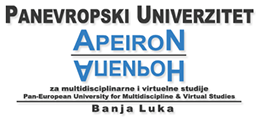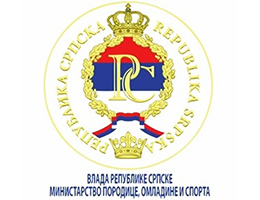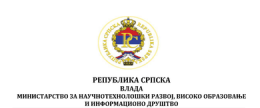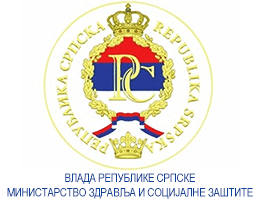Enhancing Finswimming Technique: A Revolutionary Bifins Training Model for Beginner Athletes
Volume 14, Issue 2 (2024)
Volume 14, Issue 2 (2024)
Enhancing Finswimming Technique: A Revolutionary Bifins Training Model for Beginner Athletes
Abstract:
Finswimming is an engaging and specialized aquatic sport that demands a blend of strength, endurance, and
technical precision. For novice athletes, acquiring the essential finswimming techniques is vital for their growth and longterm
success in the sport. This study aims to investigate the effect of using a bifins training model specifically designed for
beginner finswimmers on the improvement of their finswimming technique skills. The goal of this study was to evaluate
the impact of a finswimming bifins training model on enhancing the technique skills of beginner finswimmers. Conducted
at the Universitas Negeri Jakarta Diving Club, HS Agung in East Jakarta, the research involved 40 athletes, divided
equally into an experimental group and a control group. The study aimed to assess the effectiveness of the training model
by comparing the performance improvements between the two groups. A pretest-posttest control group design was used
for this pre-experimental research. Data analysis with SPSS showed a significance (2-tailed) value of 0.000, which is less
than 0.05, a T-count of 23.933 with 38 degrees of freedom, and a T-table value of 2.02439. These results demonstrated
that the experimental group experienced a significantly greater improvement in finswimming technique skills compared
to the control group. Thus, the finswimming bifins training model was found to significantly enhance technique skills for
beginners. However, the study’s limitation is that it focused exclusively on this specific training model.
Keywords:
Finswimming Bifins; Training Model; Technique Skills, Beginner Athletes.
Full Text:
References:
Ayu Kusumaningtyas, D. (2024). The Effect of 1:1 Interval Training and Flexibility on 50 Meter Speed Bifins Numbers in Female Athletes at
Octopus Diving Club, Semarang City. Health, Andicophs, 4, 246–256.
Barlow, C. E., Shuval, K., Balasubramanian, B. A., Kendzor, D. E., & Gabriel, K. P. (2016). Sitting time, physical activity, and cardiorespiratory
fitness: Cooper center longitudinal study cohort. Journal of Physical Activity and Health, 13(1), 17–23. https://doi.org/10.1123/
jpah.2014-0430
Bishop, D., Girard, O., & Mendez-Villanueva, A. (2011). Repeated-sprint ability part II: Recommendations for training. In Sports Medicine
(Vol. 41, Issue 9, pp. 741–756). https://doi.org/10.2165/11590560-000000000-00000
Bıyıklı, T. (2018). Comparison of Physical Parameters of the Individuals Who Have Received NASM-OPT Model & EMS Training in Combination
With Traditional Fitness Training Applications Regularly as Personal Training (PT) for 20 Weeks. Journal of Education and
Training Studies, 6(12), 158. https://doi.org/10.11114/jets.v6i12.3673
Cadenas-Sanchez, C. (2020). Fitness, physical activity and academic achievement in overweight/obese children. Journal of Sports Sciences,
38(7), 731–740. https://doi.org/10.1080/02640414.2020.1729516
Cañas-Jamett, R., Figueroa-Puig, J., Ramirez-Campillo, R., & Tuesta, M. (2020). Plyometric training improves swimming performance
in recreationally-trained swimmers. Revista Brasileira de Medicina Do Esporte, 26(5), 436–440. https://doi.org/10.1590/1517-
8692202026052019_0052
Castagna, O., Blatteau, J. E., Druelle, A., Amara, J., & Lacour, J. R. (2023). Oxygen uptake (Formula presented.) and pulmonary ventilation
(Formula presented.) during military surface fin swimming in a swimming flume: Effects of surface immersion. Frontiers in Physiology,
Charron, J., Emmanuel, J., Garcia, V., Roy, P., Ferland, P.-M., & Comtois, A. S. (2020). Physiological Responses to Repeated Running Sprint
Ability Tests: A Systematic Review. In International Journal of Exercise Science (Vol. 13, Issue 4). http://www.intjexersci.com
Collard, L., Hello, D., & Vitiello, D. (2022). The Snake: Change in swimming techniques under the pressure of selection. Journal of Physical
Education and Sport, 22(5), 1289–1296. https://doi.org/10.7752/jpes.2022.05161
Downie, A. T. (2017). A split decision: the impact of substrate type on the swimming behaviour, substrate preference and UCrit of juvenile
shortnose sturgeon (Acipenser brevirostrum). Environmental Biology of Fishes, 100(1), 17–25. https://doi.org/10.1007/s10641-016-
0548-z
Ehrenfeld, D. (2017). Swimming lessons: keeping afloat in the age of technology.
Ganchar, I., Ganchar, O., Ciorba, C., Medynskyi, S., Pylypko, O., Bliznyuk, Y., Pylypko, A., & Lyashenko, A. (2022). Monitoring the assessment
of the swimming skills formation among swimmers-prize-winners at stages I-II-III of the Olympic Games (1896-2021). Journal
of Physical Education and Sport, 22(8), 1869–1877. https://doi.org/10.7752/jpes.2022.08236
Hafidz, A., Prianto, D. A., & Hidayat, T. (2022). Eight-Week Functional Training with Ascending Amrap Model and For Time Constant Load
Model to Increase Abdominal Muscle Strength and Maximal Oxygen Consumption Levels in Adolescent Males. Physical Education
Theory and Methodology, 22(3), 366–372. https://doi.org/10.17309/tmfv.2022.3.10
Hlukhov, I., Pityn, M., Drobot, K., & Hlukhova, H. (2022). Improving the Physical Fitness of Students Through a Swimming Training System
at the University. Journal of Physical Education and Sport, 22(8), 1878–1884. https://doi.org/10.7752/jpes.2022.08237
Jatmiko, T., Kusnanik, N. W., Nurhasan, N., Muhammad, H. N., & Purwoto, S. P. (2024). Increase of VO 2 max After 8 Weeks Tuja Shuttle Run
Exercise for Athletes in the 14-17 Year Age Group. In Retos (Vol. 55). https://recyt.fecyt.es/index.php/retos/index
Lin, H. H., Lin, T. Y., Ling, Y., & Lo, C. C. (2021). Influence of imagery training on adjusting the pressure of fin swimmers, improving sports
performance and stabilizing psychological quality. International Journal of Environmental Research and Public Health, 18(22). https://
doi.org/10.3390/ijerph182211767
Möller, F., Jacobi, E., Hoffmann, U., Muth, T., & Schipke, J. D. (2022). Oxygen-enriched Air Decreases Ventilation during High-intensity Finswimming
Underwater. International Journal of Sports Medicine, 43(3), 230–236. https://doi.org/10.1055/a-1554-5093
Nualnim, N., Parkhurst, K., Dhindsa, M., Tarumi, T., Vavrek, J., & Tanaka, H. (2012). Effects of Swimming Training on Blood Pressure and
Vascular. AJC, 109(7), 1005–1010. https://doi.org/10.1016/j.amjcard.2011.11.029
Purwoto, S. P., Pranoto, A., Hidayatullah, F., Anwar, K., Handayani, H. Y., Widodo, H. M., Hamdhan Utama, F., Himawan, A., Arifin, M. Z., &
Utami, T. S. (2024). Neuromuscular taping reduced pain intensity after the eccentric activity in senior high school students. Sport TK,
Reigal, R. E. (2020). Physical exercise, fitness, cognitive functioning, and psychosocial variables in an adolescent sample. International Journal
of Environmental Research and Public Health, 17(3). https://doi.org/10.3390/ijerph17031100
Ruotsalainen, I. (2020). Physical activity, aerobic fitness, and brain white matter: Their role for executive functions in adolescence. Developmental
Cognitive Neuroscience, 42. https://doi.org/10.1016/j.dcn.2020.100765
Safei, I., Bahri, S., & Resmana, D. (2021). A comparison of anthropometry and physiological characteristics of finswimming athletes on short
and long distance numbers. Jurnal SPORTIF : Jurnal Penelitian Pembelajaran, 7(1), 124–135. https://doi.org/10.29407/js_unpgri.
v7i1.15814
Sammoud, S., Negra, Y., Chaabene, H., Bouguezzi, R., Moran, J., & Granacher, U. (2019). Effects of Plyometric Jump Training on Jumping
and Swimming Performances in Prepubertal Male Swimmers. ©Journal of Sports Science and Medicine, 18, 805–811. http://www.
jssm.org
Silva, L. A. D. (2020). Swimming training improves mental health parameters, cognition and motor coordination in children with Attention
Deficit Hyperactivity Disorder. International Journal of Environmental Health Research, 30(5), 584–592. https://doi.org/10.1080/096
03123.2019.1612041
Simbolon, M. E. M. (2024). The Retos journal is in the second quartile of Scopus: a bibliometric analysis from 2016 to 2023. Retos, 56,
427–432.
Soni, V., & Vedawala, N. (2022). Effectiveness of Plyometric Exercises to Improve Speed and Agility in Young Beginner Swimmers: A Randomized
Control Trial. International Journal of Research and Review, 9(3), 89–95. https://doi.org/10.52403/ijrr.20220311
Umar, F., Misbah, M., Ekawati, F. F., & Hanief, Y. N. (2022). A bibliometric analysis of adaptive physical education. Journal of Physical Education
and Sport, 22(12), 2996–3002. https://doi.org/10.7752/jpes.2022.12378
Vasícková, J., Neumannova, K., & Dostalova, J. (2015). Inclusion of respiratory muscle training in the training of youth fin swimmers. https://
Vašíčková, J., Neumannová, K., & Svozil, Z. (2017). Effect of Respiratory Muscle Training on Fin-Swimmers’ Performance. Journal of Sports
Science and Medicine, 16, 521–526. http://www.jssm.org






